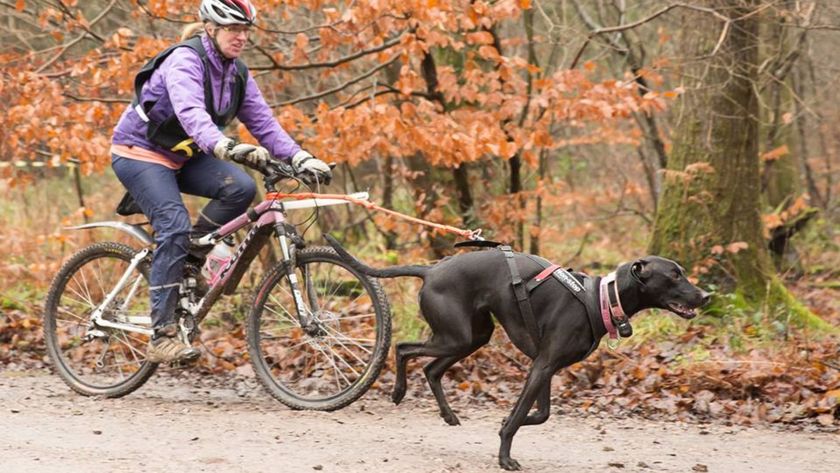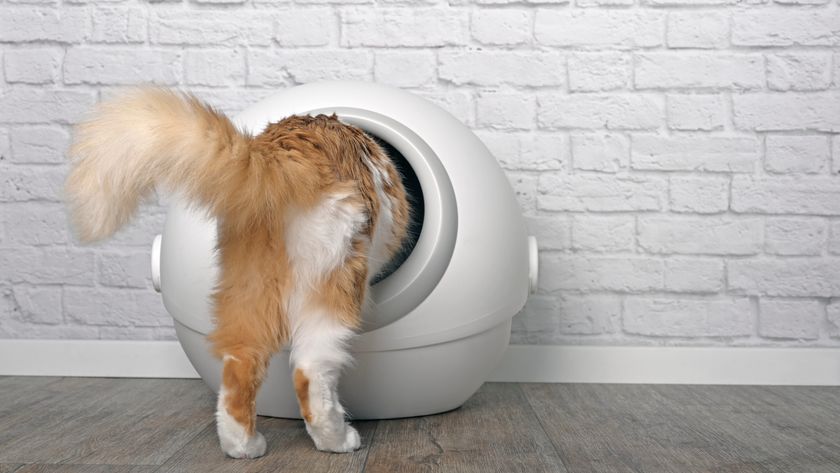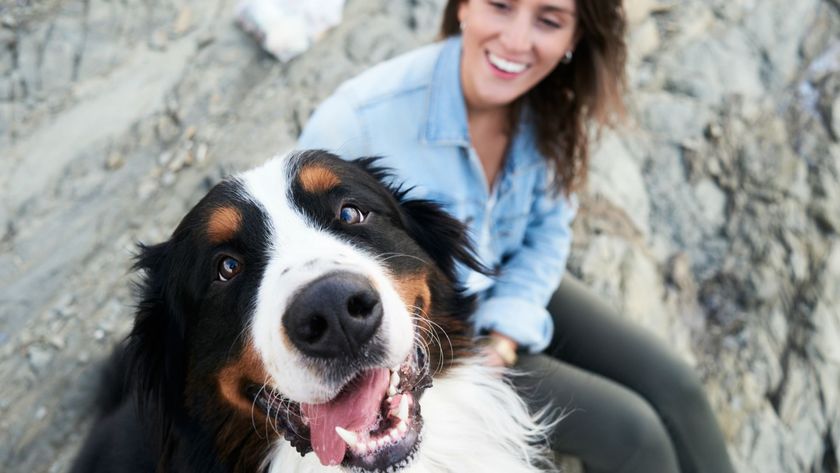How to crate train a dog: A vet’s guide
Want to learn how to crate train a dog? We asked a vet — this is what they had to say

Learning how to crate train a dog is something most new puppy owners will have to do at some point. Whether it’s for safety reasons, house training purposes, or for travel — crates provide a safe and secure den for your dog.
But even after you've got one of the best dog crates, what do you do next? It’s easier to get your pooch more accustomed to its crate the younger they are. Although any age of dog can be crate trained. One of the top ways to get them started? Fill their crate with all their favorite things, like some of the best puppy toys or treats, so you can keep them entertained. This trick will also help your four-legged friend think of their crate as a positive place.
Crate training might sound a little harsh. But one of the most important things to remember is that a crate is not a cage. It’s designed to provide a safe haven for your pup and a place to call its own. To help you on your journey to crate training your dog, we spoke to veterinarian Dr Joanna Woodnutt.
Why should I crate train my dog?
For those not familiar with crate training, the system can seem a little harsh and old-fashioned. But crate training is good for your dog. It can help to keep them safe when you can’t be home, and give them a secure space that’s theirs. Remember, wild dogs live in dens, so a cave-like space is comforting to them. Crate training your dog also helps them to feel at home if they have to visit the vets, and to cope better with being kennelled at a boarding establishment if you go abroad. It can also help with toilet training, and even when dealing with separation anxiety.
How long does it take to crate train a dog?
How long it takes to crate train a dog depends on the age of your dog, his prior experiences, and his personality. For dogs that are quick to learn and confident, who have had no bad experiences with the crate, a week or two may be enough. However, for an older dog who has already developed a fear of his crate or is of a nervous disposition, it may take longer. How long it takes to crate train a dog also depends on your goals – do you want to be able to shut him in there all night? Or do you just want a dog that’s a little more confident when he visits the vets? It’ll take a lot less time to train a dog to walk into a crate with confidence than to stay there for periods of time without you.
7 tips to crate train your dog
1. Leave the crate up at all times
Try to find somewhere for the crate so that it can be left up all the time. The crate should become part of your dog’s daily life, just like the sofa or dog bed might be. Only getting it out to put your dog in when you are leaving the house means it will become associated with you leaving, and stop being so comforting. Ideally, the crate should be left somewhere where your dog can access it when he chooses to, not just when you ask him to.
2. Create a cosy den in the crate
The dog crate needs to become a cosy sleeping space that your dog feels safe in, so turning it into a den is a great way to make it feel safer and more secure. Throw a towel or blanket over the top, put a dog bed inside, and throw in a few of the best dog toys to make it feel like home. For some dogs, using a pheromone spray on the blanket or a plug-in diffuser nearby helps them to feel more relaxed. Respect this area as your dog’s space, a bit like a bedroom. It’s good practice to ask children not to approach the dog’s crate, regardless of whether he is inside or not.
3. Associate the crate with positive things
Just as with any habituation program, you need to associate your dog’s crate with positive things. This might involve feeding them in the crate or hiding dog treats in the crate. For dogs that are reluctant to go through the open door of the crate, you can try playing a game where their favourite toy is thrown into the crate for them to collect. Your dog should come to view the crate as a fun place to be.

4. Don’t shut the crate door (at first!)
Don’t- whatever you do- throw the food into the crate then slam the door shut behind your dog- it will only scare them and set their training back. The first few times your dog goes into the crate, don’t shut the door at all. Once your dog is going into the crate willingly and often, you can start to push the door to, but don’t lock it. Build up to closing the crate door slowly over a week or two of daily practice.
5. Slowly build up the time they’re in there
Once you’ve got the door closed behind your pooch, the next step is to start increasing the amount of time your dog is in the crate for. At first, it’s best to stay with them. Open the crate within a minute or two, and certainly before your dog starts to get upset, so that they leave calm and happy. Slowly build up the amount of time they are in the crate for before you open the door, then start to leave them alone in the crate. It might help to distract them with a treat or chew the first few times you leave so they barely notice you go.
6. Only let your dog out when they’re quiet and calm
If you progress through the training steps too quickly, your dog may become distressed. It’s important not to let your dog out of the crate when they’re stressed, whining, or crying, as this will allow them to think that having a tantrum works. Instead, wait until they are quiet and calm, then let them out from the crate. Next time you practice with the crate, go back a step so that you remove them from the crate before they become upset.
7. Never use the crate for punishment
Using the crate for punishment defeats its purpose and undoes all your hard work with training your dog. Whilst the dog crate can be used to prevent toileting accidents, chewing, and other destructive behaviours, it should never be used to punish a dog after these have occurred. Your dog will soon try to resist the crate, making it much harder for you to train him. On the whole, punishing your dog is unnecessary. If you discover an accident or a chewed slipper, quietly clean it up, ignoring your dog completely.
Alternatives to crate training
Of course, crate training isn’t for everyone (or every dog!). If you have a dog that was locked in a crate for some time in the past, they may be too scared to go into the crate, and you may need a different option.
Remember, the goal of crate training is to teach your dog that his bed is a safe place where he can rest, and that going there when asked is a rewarding option. Therefore, you can try using a small room or the underside of a desk instead of a crate. Teaching a command like ‘in your bed’ is a good way to encourage your dog to go to a set place and wait there to be released. Even if that bed isn’t in a crate, this command can help dogs to understand what’s expected of them at the vets and groomers.
Crate training your dog has a range of benefits for you, your dog, your dog sitter, and your vet, so it’s well worth taking the time to do it properly. How to crate train a dog involves hard work, but it can be fun for both of you!
Looking for more on crate training? Find out how to stop your puppy crying in the crate or discover some fantastic crate games for dogs. Or, read why shouldn't you sleep with your dog

After graduating as a veterinarian from the University of Nottingham, Dr Joanna Woodnutt went on to practice companion animal medicine in the Midlands, UK. Dr Woodnutt is specifically interested in consulting and helping her clients understand their pets better, whether it’s around medical problems such as dermatology, behavior, and nutrition.
PetsRadar Newsletter
Get the best advice, tips and top tech for your beloved Pets
After graduating as a vet from the University of Nottingham, Dr Joanna Woodnutt went on to practice companion animal medicine in the Midlands. Since then, she has also written for countless online and print publications and is a regular contributor for Edition Dog Magazine.











